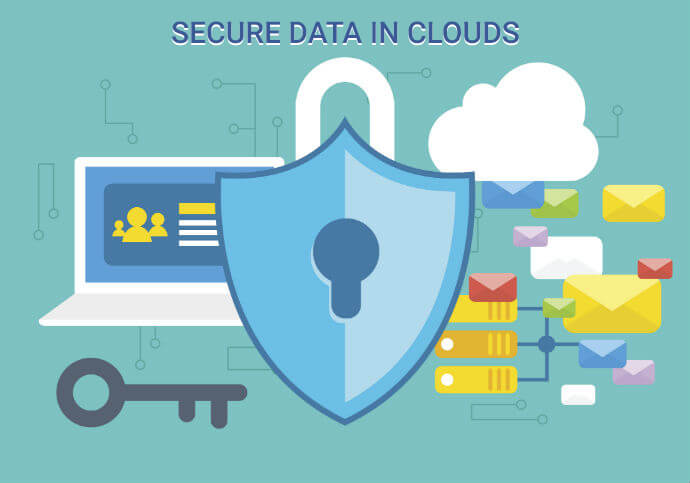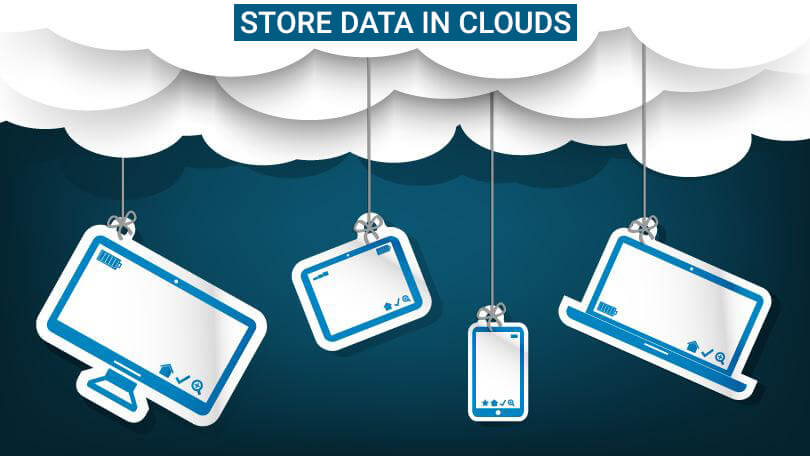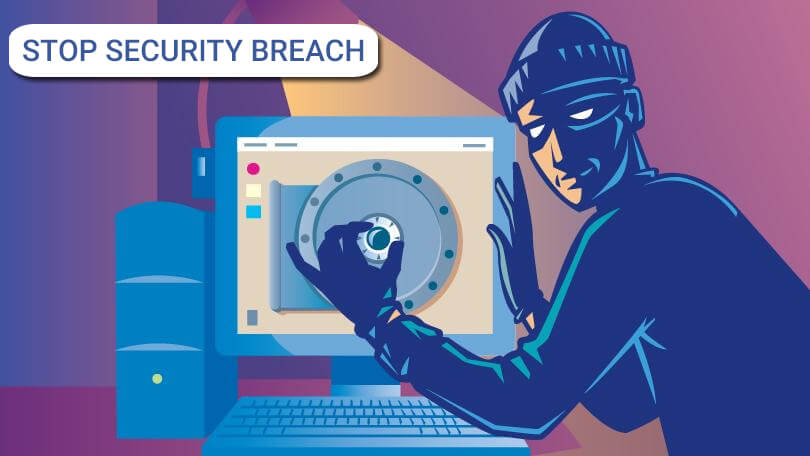
Cloud computing has opened up a whole new world of opportunities to the small and medium enterprises. It is cost-effective, scalable, convenient, and allows the users to collaborate with others in the most effective way possible. And most importantly, it allows you to store your crucial data on the cloud database which can be used from anywhere, anytime.
However, the security of the cloud database is a huge concern for the majority of the organizations. With all the security risks, threats and breaches, not just the stored data but even the cloud based applications require comprehensive security management. While there is a huge risk of a data breach in cloud networks, you can put an end to such breaches with some smart measures.

1. Authenticate the people who have access to the network:
Your data on the cloud is safe as you keep it. If you give your network access to every Tom, Dick and Harry, you are going to end up compromising your data security. It is wiser to authenticate the person whom you are giving access to your cloud database.

A proper authentication of each of the users will not only help you keep a tab on the access log for each user but also reduce the chances of unauthorized access. Whether you run cloud-based free VAT softwareor a premium accounting application, such authentication can save you from several security breaches.
2. Frame user-specific access permissions:
If you are responsible for the maintenance of the cloud database of the organization, quite obviously you don’t need to know what marketing strategy the organization is adopting for the next month’s campaign.
Similarly, there’s no need to give an all-access pass to the database to everyone in the organization. While issuing the network access to each of the individuals frame their access permission as per their job role. This may just help you reduce the data breach.
3. Authenticate all the software that runs on the system:
Whether you realize this or not, the software you or the other users in the organization used on the system can be responsible for the security breach in the cloud database. Since the software, especially the cloud-based ones, are run by the third party, you need to make each one of them carry no threat to your cloud database.
Get the software patches authenticated by the cloud providers. Also, manage the security patches with more firmness. You may be aware of the fact that a lot of service outages are caused by configuration errors.
4. Keep a log of all the unusual activities:
You need to be more watchful about the unusual activities that take place on the network. Most of the cloud service providers these days claim to provide with several layers of security. However, you need to ensure the safety of all the data that are stored in the cloud and the applications that are integrated into the cloud service.
Install an intruder-detection technology which will notify you every time there is suspicious activity in progress. This may help you prevent the security breach then and there while acknowledging the source of the breach.
5. Streamline the permission requesting process:
In order to make sure all the requests for permission to access the data or applications are proceeding properly, you need to streamline the process. Unless you formalize the requesting process, you leave a room for error which will be enough for the opportunists to breach the security of your network.
Whether you are sharing the system with a third party or you have given the access to the members of the organizations only, a streamlined requesting process will help you maintain a safe and secure network. In fact, you should include the permission to upload data to the cloud in this streamlining process.
6. Encrypt your data for an extra layer of security:
Encryption adds an extra layer of protection on the data by transforming it into something else. So, it is always better to keep the crucial data encrypted while uploading it to the cloud. Keep the keys to encrypt and decipher the information with you.
Since most of the cloud services are usually provided by the third party, it is always recommended to add some extra layer of protection on the data, just to be extra sure. Also, when you keep the keys to encrypt and decipher with you, no one will be able to make use of that data except you.
7. Monitor the user activities and analyze them for unexpected behavior:
Whether you are aware of it or not, the majority of the security breaches are done by someone inside the organization. Without any assistance from the inside, no outsider can breach the security and steal data from the network. However, the insiders rarely get caught.
Keeping a tab on the activities of the users can help you prevent the security breach to a great extent. Just monitor all the unexpected activities that are done by the members and follow them up regarding the issue.
Even though checking the vulnerabilities of the cloud network is the job for the cloud service providers, you can perform it yourself just to stay one step ahead of any unexpected incident. If you find even the smallest of vulnerability in the cloud network’s security, you should notify the service provider and tell them to fix it.
Most parts of the agreements between the customer and the cloud service provider protect the interest of the provider only. So, it is always recommended that you check the network regularly to ensure the security is intact.
There’s no denying that cloud computing has a plethora of benefits to offer, but at the same time it also puts you in front of a lot of security threats, especially if you are not prepared to fight them back. These aforementioned tricks can certainly make your data safer. However, you will require everyone’s cooperation.
Harry Jonson is a tax advisor Dubai and holds an extensive knowledge of free VAT software for businesses. He has also worked in the domain of customer relations for a brief period. He received his Masters degree from the University of Dubai. He is presently associated with the website Uaevatexpert.ae.